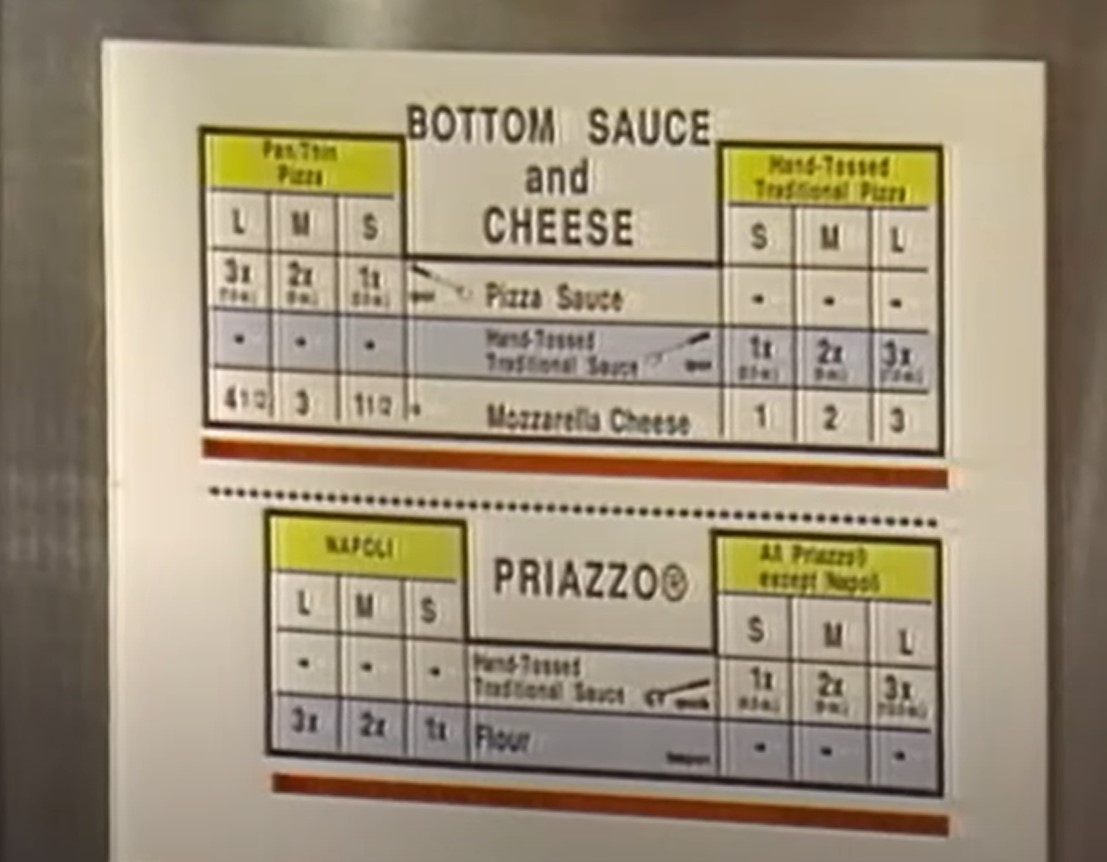We believe tapping into customer reviews, and feedback is essential for refining our menu and optimizing marketing efforts. This process reveals valuable insights into customer preferences and highlights areas for improvement. By actively monitoring feedback across various channels, we can identify trends, seasonal changes, and dietary needs that shape our offerings. Implementing necessary changes elevates the dining experience and builds customer loyalty. Additionally, tailored marketing strategies based on genuine input create a stronger connection with our audience. If you’re enthusiastic to explore how we can maximize these insights, there’s so much more to uncover.
Key Takeaways
- Collect customer reviews at all touchpoints to gain diverse insights for refining your menu and marketing strategies.
- Analyze feedback to identify trends, preferences, and pain points that inform menu adjustments and promotional tactics.
- Implement changes like portion size adjustments and local ingredient sourcing based on direct customer input for enhanced satisfaction.
- Leverage user-generated content and influencer partnerships to bolster brand credibility and amplify your marketing reach.
- Utilize a content calendar to ensure timely engagement and adaptation to trends informed by customer feedback.
Importance of Customer Feedback
When we embrace customer feedback, we reveal invaluable insights that can shape our menu and marketing strategies. By implementing effective feedback mechanisms, we better understand our customers’ preferences and pain points. This is not just about collecting opinions; it’s about revealing the secrets to elevated customer satisfaction.
We’ve all seen how a single negative experience can ripple through our customer base. By actively listening to feedback, we can identify trends that highlight areas for improvement. This analytical approach allows us to refine our offerings, ensuring that every dish resonates with our target audience. When customers feel heard, they’re more likely to return, and their loyalty can greatly boost our bottom line.
Moreover, leveraging feedback for marketing initiatives transforms our outreach from generic to personalized. Tailoring our promotions based on customer input fosters a sense of connection and control, making patrons feel valued. In an increasingly competitive landscape, we can’t afford to overlook the importance of customer feedback. By prioritizing this invaluable resource, we enhance our menu and create a marketing strategy that truly speaks to our audience, driving both satisfaction and sales.
Collecting Customer Reviews
Gathering customer reviews is essential for honing our menu and marketing efforts. By tapping into various feedback channels, we can gather valuable insights to make informed decisions. We can leverage multiple review platforms to guarantee capturing a broad spectrum of customer opinions.
| Feedback Channels | Review Platforms |
|---|---|
| Social Media | Yelp |
| Email Surveys | Google Reviews |
| In-Store Comment Cards | TripAdvisor |
Our approach should be proactive. Encouraging customers to leave reviews at every touchpoint—online or in-store—creates a thorough feedback loop. By actively engaging with customers, we demonstrate that we value their opinions and foster loyalty.
We can incentivize reviews with small discounts or special offers, making it easier for customers to share their thoughts. Regularly monitoring these platforms lets us stay attuned to customer preferences and emerging trends. This way, we’re not just collecting data; we’re using it to refine our offerings and marketing strategies. Ultimately, empowering ourselves with customer insights will lead to a stronger, more responsive business.
Analyzing Feedback Trends
As we sift through the feedback, we can identify common preferences that reveal what our customers truly enjoy. By tracking seasonal changes, we can anticipate shifts in taste and adapt our menu accordingly. This proactive approach keeps our offerings fresh and strengthens our connection with our audience.
Identifying Common Preferences
Over time, analyzing customer feedback can reveal valuable insights about common preferences that shape our menu and marketing strategies. By focusing on what our customers consistently highlight, we can make informed decisions that resonate with their desires. Here are three key areas we should pay attention to:
- Taste Preferences: Understanding which flavors excite our customers helps us tailor our offerings. Are they leaning towards spicy, savory, or sweet?
- Dietary Restrictions: Customers increasingly seek options that accommodate their nutritional needs. Identifying these restrictions allows us to expand our menu inclusively.
- Portion Sizes: Feedback on portion sizes can guide us in meeting expectations around value and satisfaction, directly influencing pricing perceptions.
Tracking Seasonal Changes
Seasonal shifts often bring changes not just in weather but also in customer preferences and dining habits. Analyzing feedback trends allows us to adapt our menus to embrace seasonal ingredients that resonate with our clientele. This adaptability isn’t just a strategy; it’s a necessity for staying relevant and competitive.
To illustrate this, let’s examine how customer feedback can guide our menu adjustments through different seasons:
| Season | Customer Feedback Focus |
|---|---|
| Spring | Freshness, lighter dishes |
| Summer | Chill, vibrant flavors |
| Fall | Comfort food, spices |
| Winter | Hearty, rich ingredients |
Tracking these seasonal trends allows us to refine our offerings continually. For example, we can introduce more salads or seafood dishes when we notice a surge in requests for lighter options in spring. In contrast, we can pivot toward hearty stews and warm spices as winter approaches.
This proactive approach enhances customer satisfaction and demonstrates our commitment to quality and responsiveness. Let’s take control of our menu adaptability and guarantee our offerings align perfectly with what our customers desire throughout the year.
Implementing Menu Changes
When we embrace customer feedback, we release the potential to refine our menu in ways that resonate with our patrons. By implementing thoughtful menu changes, we can enhance the overall customer experience. Here are three critical areas to focus on:
- Ingredient Sourcing: Prioritizing local and seasonal offerings supports our community and aligns with culinary trends that our customers appreciate.
- Portion Sizes: Adjusting portion sizes based on feedback can create a more satisfying experience, allowing us to balance pricing strategy with customer expectations.
- Meal Presentation: Elevating our meal presentation enhances visual appeal, ensuring that our dishes taste great and look enticing.
As we analyze competitor offerings and listen to our patrons’ dietary options, we can refine our menu design to reflect what truly matters to them. This proactive approach allows us to remain agile in an ever-evolving market while optimizing our pricing strategy. Ultimately, by focusing on these key areas, we empower ourselves to create a menu that meets and exceeds our customers’ needs and desires. Let’s take control and elevate our culinary experience together!
Enhancing Marketing Strategies
Understanding our target audience becomes essential for success as we refine our marketing strategies. By leveraging customer feedback, we can craft engaging social media campaigns that resonate with them. Let’s explore how these insights can transform our outreach and enhance our brand presence.
Target Audience Insights
Understanding our target audience is essential for refining our marketing strategies and ensuring our menu resonates with diners. By gaining insights into our target demographics, we can better align our offerings with consumer behavior, ultimately driving engagement and loyalty. Here are three key elements to contemplate:
- Demographic Analysis: Identify the age, gender, and income levels of our customer base. Understanding these factors helps us tailor our menu items and promotions.
- Consumer Preferences: Track feedback on dishes that excite diners. Are they seeking healthier options, unique flavors, or comfort foods? This insight allows us to innovate and adapt.
- Dining Habits: Analyze when and how often our customers dine with us. Are they frequent lunch-goers or occasional dinner guests? Knowing this helps us optimize our marketing efforts and timing.
Engaging Social Media Campaigns
Having gained valuable insights into our target audience, we can now leverage these findings to craft engaging social media campaigns that resonate with our diners. By implementing social media contests, we’ll encourage participation while generating excitement around our brand. User-generated content will serve as authentic endorsements, showcasing real experiences that potential customers can relate to.
Influencer partnerships can amplify our reach, tapping into established audiences that align with our brand voice. We’ll maximize our impact by carefully selecting platforms based on where our target demographic spends their time. Hashtag campaigns will further enhance our visibility, creating a sense of community and making it easier to track engagement.
Through visual storytelling, we can convey the essence of our dishes, sparking interest and desire. Utilizing content calendars will help us stay organized, ensuring a consistent flow of engaging material. Trend monitoring allows us to adapt our campaigns in real time, keeping our messaging fresh and relevant.
Together, we can create an engaging social media presence that showcases our offerings and fosters a connection with our audience, driving them to choose us time and again.
Building Customer Loyalty
Building customer loyalty isn’t just about offering great food; it’s about creating an experience that resonates with our patrons on multiple levels. Focusing on genuine connections can enhance customer retention and solidify our brand’s presence. Here are three strategies we can implement:
- Loyalty Programs: Tailoring reward systems incentivizing repeat visits can deepen our patrons’ emotional connection to our brand.
- Personalized Experiences: By utilizing feedback loops, we can craft experiences that reflect our customers’ preferences, making them feel valued and understood.
- Community Engagement: Hosting events or partnering with local businesses fosters brand advocacy, allowing our patrons to feel part of something greater than just dining.
Frequently Asked Questions
How Can I Encourage More Customers to Leave Reviews?
To encourage more customers to leave reviews, let’s focus on incentivizing feedback. By engaging customers through personalized messages and rewards, we create a sense of community, making them more likely to share their experiences with us.
What Platforms Are Best for Collecting Customer Feedback?
They say, “The squeaky wheel gets the grease.” To enhance customer engagement, we should utilize social media, online surveys, feedback forms, loyalty programs, and review platforms—each avenue empowers us to gather valuable insights efficiently.
How Often Should I Update My Menu Based on Feedback?
We should update our menu at least quarterly, incorporating seasonal updates and customer feedback. This frequency keeps our offerings fresh and relevant, ensuring we stay in tune with our patrons’ evolving tastes and preferences.
Can Negative Feedback Be Beneficial for My Business?
We often view negative feedback as a gentle nudge toward improvement. Constructive criticism shapes customer perception, allowing us to refine our approach, enhance satisfaction, and ultimately regain control over our brand’s narrative and success.
How Do I Measure the Success of Menu Changes?
We analyze menu performance metrics and conduct customer satisfaction analysis to measure the success of our menu changes. By tracking sales, gathering feedback, and monitoring engagement, we can confidently refine our offerings to enhance customer experiences.
To summarize, by embracing customer reviews and feedback, we’re not just refining our menu and marketing but creating a dialogue that resonates with our patrons. As we adapt to their tastes and preferences, we discover unexpected trends that align with our brand’s vision. This synergy fosters loyalty, transforming casual diners into devoted fans. Together, we can craft an experience that’s satisfying and memorable, ensuring our success is a delicious coincidence of listening and evolving.




